
11 Tips on Using Framing in Photography for Better Composition
What is framing in photography and how can you use it to take your photos to the next level? Check out this guide to find out!
Learn | Photography Guides | By Andy Day
Every time we lift the camera to our eye, we’re creating a frame, but the best photographers know how to use frames within that frame to create striking and powerful images.
Careful use of framing can lead the viewer’s eye, create a sense of balance within an image, and make your photographs stand out.
Used correctly, framing can turn what would otherwise be an unremarkable photograph into something much more engaging.
What is Framing in Photography?
Framing in photography is the method of using elements of your scene to create a frame around the main subject of your photo, drawing the viewer’s attention and giving the photograph a more artistic feel.
You’re looking to find elements within your scene that can be used to make a frame that surrounds the principle point of interest in the photograph — whether that’s a person’s face, a cloud or part of a building. This is also known as subframing.
In effect, you’re creating a picture within a picture (similar to the Droste Effect) — using what’s in your frame to create another frame.
You can literally use anything to make this frame: tree branches, a car door, or a window are good examples, but you could just as easily use out-of-focus elements, areas of shadow, other people, or blades of grass.
Framing can take a bit of practice — first to know when it can add to an image without feeling forced, and secondly to be able to realise that there are elements in front of you that you can use to help construct your frame.
(See more common photography terms here.)
Why Use Framing in Your Photography?

Framing is useful in wedding photography to draw the viewer’s eye to the subject. | Credit: Mark Condon
We often hear about how a good painting or photograph leads the eye, and there’s something about a subframe that gives a feeling of satisfaction and balance to a photo.
Using elements of your photography composition to create a frame around the subject helps to direct the viewer to the most important part of the image. It also prevents other elements from competing for the viewer’s attention.
Framing is often very simple in how it works – isolating what’s important and allowing the viewer to understand where their eye should fall, and which other parts of the image are merely there to compliment the main subject.
It should draw a viewer into the photograph and lead their gaze, working as an aid to understanding what is being presented.
Framing shouldn’t necessarily be forced, however. Most of the time, the elements that you use to construct your frame should work within the photo itself and feel natural to the viewer.
In this way, framing can help to give context to a photograph, placing your subject in a situation that makes the viewer understand, or perhaps be intrigued by the image.
On the other hand, framing doesn’t always have to give an explanation; sometimes it can create a sense of mystery, grabbing your viewer’s attention.
In a busy scene, framing can help to hide elements that would otherwise distract the viewer and make the photo too busy. If you find that a scene you’re trying to photograph just isn’t working, try removing non-essential parts.
If you can’t crop something out, you might be able to find a way to frame your subject so that the distraction is simply hidden instead.
Framing often works well alongside the concept of minimalism, reducing the number of elements within a photograph and thereby increasing the impact of what’s being portrayed.
Framing can also add a pleasing sense of depth to a photograph, adding a foreground or background to a scene, giving a two-dimensional image a three-dimensional feel. This helps to make a viewer feel like they can almost explore a photograph physically, rather than just see it on a screen or page.
Framing is often most effective when paired with some basic principles of composition, such as the rule of thirds or the golden ratio.
How Much Do You REALLY Know About Photography?! 🤔
Test your photography knowledge with this quick quiz!
See how much you really know about photography...

Most of the time, rather than thinking about these rules, it’s best to take a lot of photographs, experiment, and start to understand what “just feels right” about a shot. You might then find that you’ve used framing and some photography composition rules without even realising.
How Do You Frame a Photography Shot? 11 Ideas
There are various tricks for framing your subject within your shot. Here are a few ideas to get you started.
1. Use Negative Space
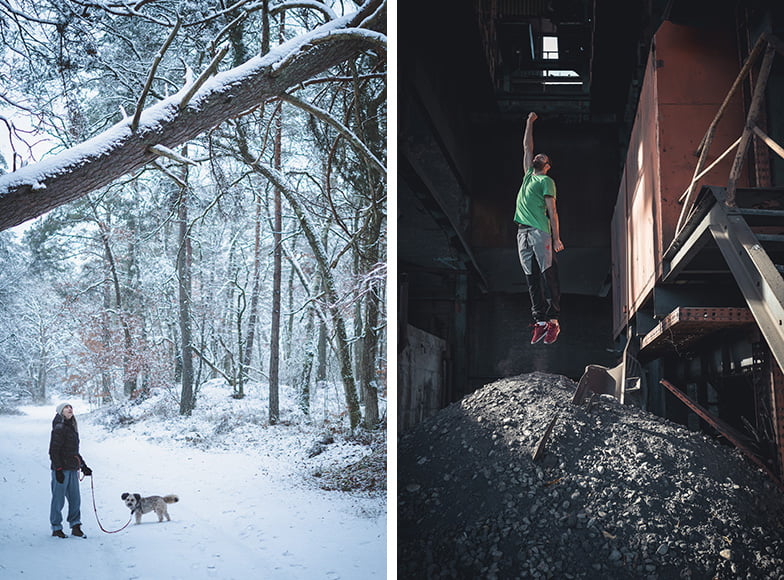
Creating a frame for a subject is often as simple as trying to find something clean against which to place them.
If your subject sits freely in space — i.e., against an area of the photo that is clear and uncluttered — it tends to have more impact. For example, a portrait tends to be more striking if there are no branches or power cables sticking out of people’s heads.
You could describe it as finding or creating an area of negative space and punctuating that space with what’s most important. This is a simple yet effective way to frame the photograph.
It doesn’t always have to be sky; it can be plain sections of wall, or even using a shallow depth of field to turn the background into an area that’s blurry and smooth.
2. Use People
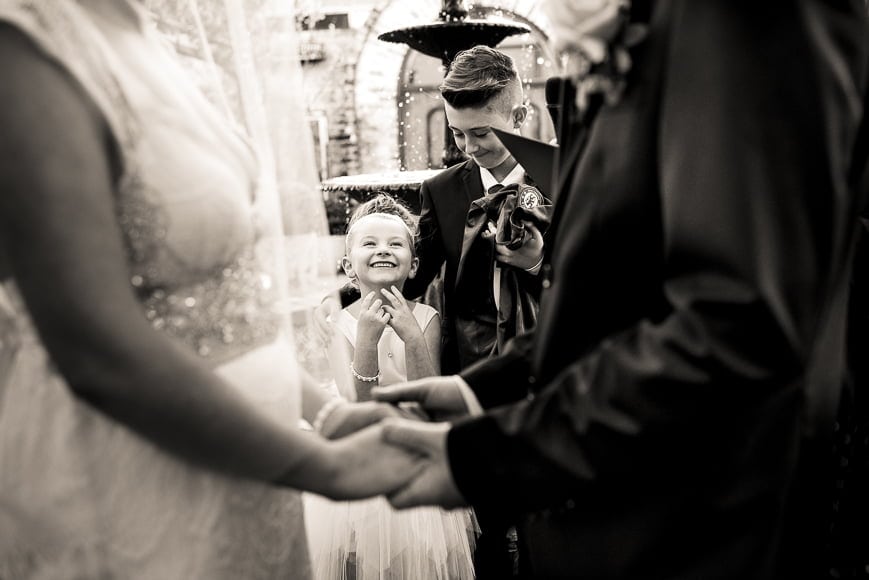
Framing photography using a longer lens. | Credit: Mark Condon
If you’re photographing a gathering of a people, there will often be the opportunity to pick out a subject by shooting in between people’s bodies and using them almost like bookends.
Weddings are an ideal time to use this technique, especially as people’s faces can be full of emotions, and the clothing or positioning of the people you’re using as bookends can give your subject context.
You can also use a shallow depth of field to push the viewer’s eye towards your subject, rendering your subject sharp and making your bookends nice and blurry.
3. Use Natural Elements

Silhouettes are a powerful way to invite the viewer’s eye to linger. | Credit: Mark Condon
Nature can present with plenty of opportunities to create frames and it’s useful to start training your eye to identify them.
Tree branches can be used to make frames for a portrait, or a blank section of mountainside might be the perfect background against which to place an isolated tree.
Whatever the subject, it’s likely that you’ll have to move yourself in order to create the frame, whether that’s climbing a tree, a stroll on the beach, or trekking up a mountain. Don’t be afraid to explore.
4. Use Architectural Features
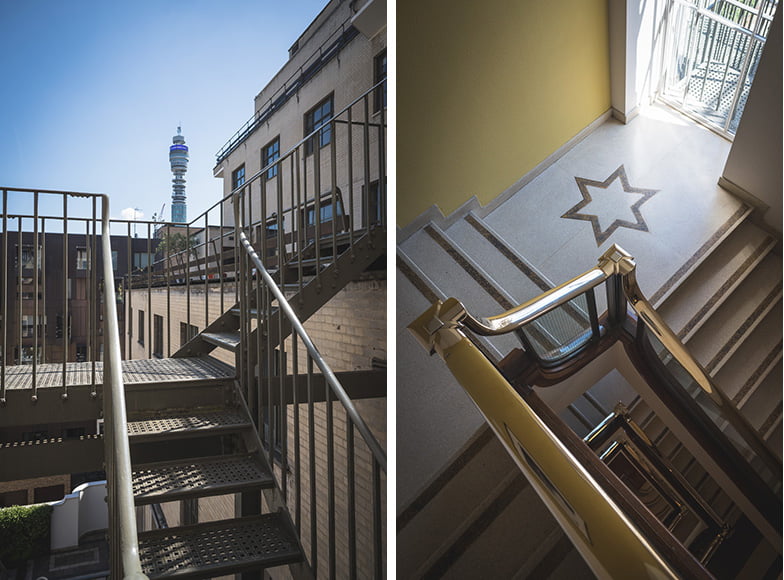
Architectural elements such as railings can help provide framework to an image. | Credit: Andy Day
Just as nature presents us with opportunities to create frames, so can architecture, whether it’s windows, railings, blank sections of wall, or pillars.
Get creative: find innovative vantage points in order to place your subject inside architectural elements, or take advantage of clean walls and strong leading lines.
Just as you’ll need to move around to find natural features to create frames, the same goes for architecture.
Challenge yourself to find unusual vantage points from which to shoot, and experiment with different focal lengths.
5. Use Colour
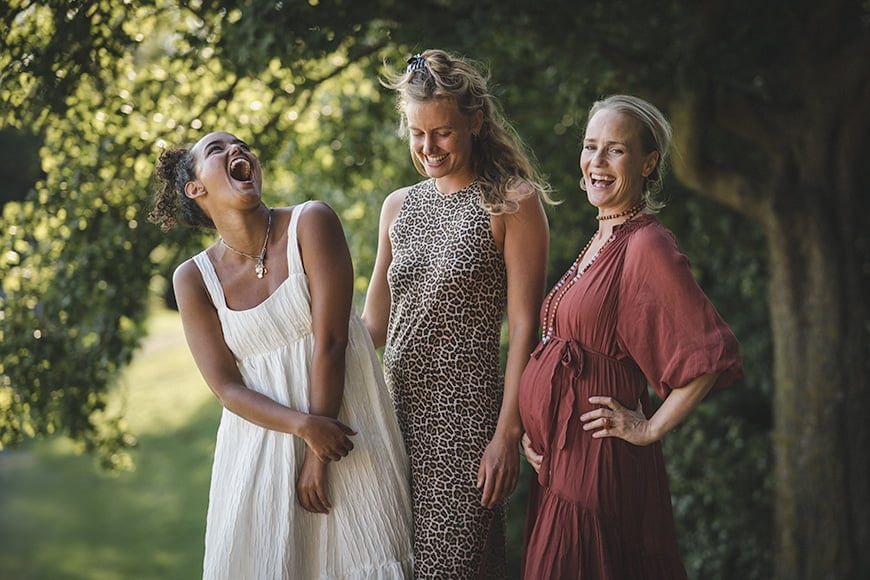
Framing doesn’t always have to involve geometric shapes; sometimes you can use contrasting colours to isolate your subject.
It tends to work best if the part of the image that’s creating the frame is one colour — perhaps a block of green leaves. It doesn’t matter if the frame is busy, as long as the colour is quite uniform.
This method of framing can be particularly striking if you have two colours that are on opposite sides of the colour wheel.
6. Use the Subject’s Own Body

Credit: Apostolos Vamvouras
Sometimes part of your subject’s own body can be used as a frame, whether it’s having them reach towards the camera with outstretched arms, or using parts of their own body to frame their face.
Check out our guides to female poses and male poses for more ideas.
7. Use Light and Shadow
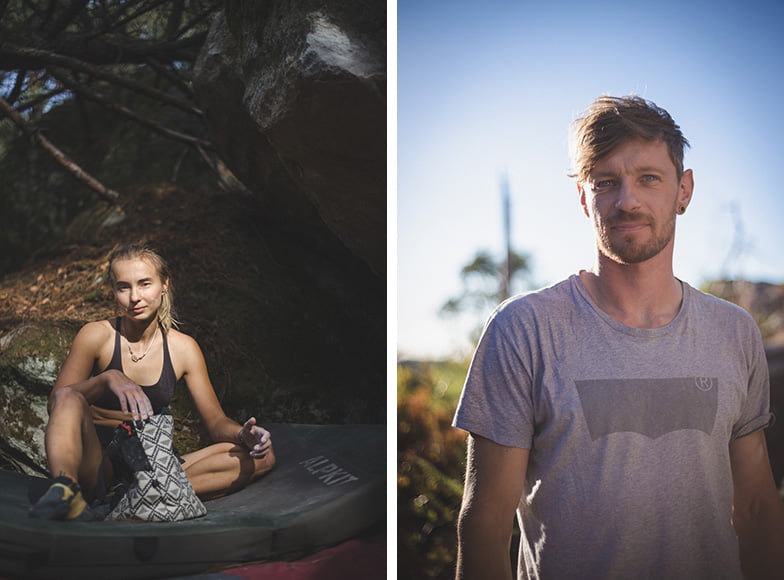
Credit: Andy Day
This is a common technique in street photography, but there are lots of other situations where having a brightly lit subject framed by a dark shadow can make for a strong composition.
It’s worth remembering that your camera doesn’t have the same dynamic range as the human eye, so what might look like a messy shadow to you might actually be a section of complete blackness that makes the brightly lit subject in the foreground jump out.
Of course, if it’s not quite dark enough to achieve this, you can always make that shadow darker when you come to edit the photograph later.
8. Use Props
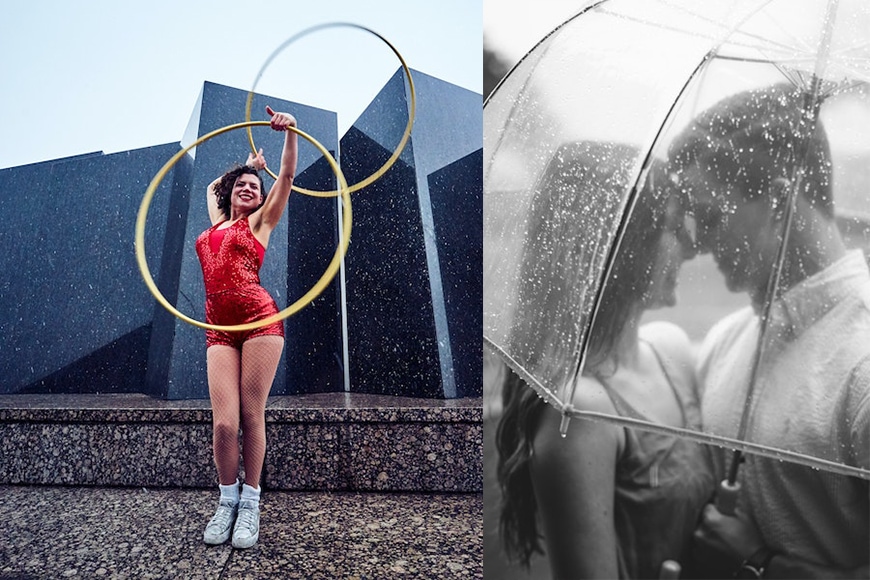
Credit: Morgan Sessions // Dmitry Dreyer
If you’re struggling to find a composition that works, there’s no reason not to cheat: either find something that’s already to hand from what’s in front of you, or simply grab yourself a couple of props.
9. Use Out of Focus Foreground Elements

Credit: Mark Condon
This is a classic technique for shooting in really boring locations: get down low and use blades of grass to frame your subject.
You can use a shallow depth of field to make the foreground out of focus and keep your subject sharp, increasing the effect.
This can be an effective way of tidying up a shot, clearing up clutter and removing any distracting elements. If it’s messy, hide it behind the foreground.
In addition, getting low to the ground often has the advantage of placing your subject against a clean section of sky, and removing background elements that might otherwise be a distraction.
10. Create a Sense of Depth

Credit: Mark Condon
Making your two-dimensional image feel more like a three-dimensional reality can be achieved by creating a sense of depth in your images, and can also be used as a way of framing your subject to create striking results.
Search for features that you can include in the foreground and emphasise the effect by using differential focus — i.e., blurred foreground, sharp subject, blurred background — to give even more depth.
This can make your viewer feel like they can step right into the scene that you’re presenting, making it more engaging.
11. Break the Rules by Breaking the Frame

Credit: Andy Day
Understanding how framing can work in order to learn how to create stronger compositions can be useful, but breaking these rules — and the frame — can add drama to an image.
Your subject doesn’t always need to be perfectly contained by the frame that you’ve created, and sometimes having the subject escaping from one and into another can give a dynamic feeling to an image.
Photography Framing FAQs
What are framing techniques?
Framing techniques are different ways of using the elements in a scene to isolate and draw attention to your subject. By using framing in your composition, you can lead the viewer’s eye, create a sense of balance, and make your photos more captivating.
What are some ways of framing within a photograph?
You can get as creative as you like, but a few ways of framing a photograph are to use negative space, use natural elements or architectural features, use colour, light, shadow, or props. See above for examples.
How do you frame within a frame?
To create a more obvious “frame within a frame” effect, look for elements that can act as a frame for your subject, and include that frame in your image. For example, you might shoot through a hole in a wall, a window or doorway, a gap in some tree branches, etc., with your subject positioned on the other side.
What is fill the frame?
Filling the frame is simply composing your photograph so that your subject fills a large portion of the image. When you fill the frame, little to no background elements will be present.
Final Words on Framing for Photography
Many photographers use framing without even realising, but having an awareness of how to incorporate it into your work can help you progress your photography.
Your photos will suddenly have more impact and become more engaging for your viewers.
As you practice, you’ll find yourself naturally finding ways to organise a shot so that the main point of interest is placed against a clean background, or find ways to use foreground elements to isolate a subject.
Using frames is one of the simplest ways to elevate your photos to the next level, and the more you practice it, the more intuitive it becomes.
If you have more ideas or questions, feel free to drop a comment below!

Check out these 8 essential tools to help you succeed as a professional photographer.
Includes limited-time discounts.













